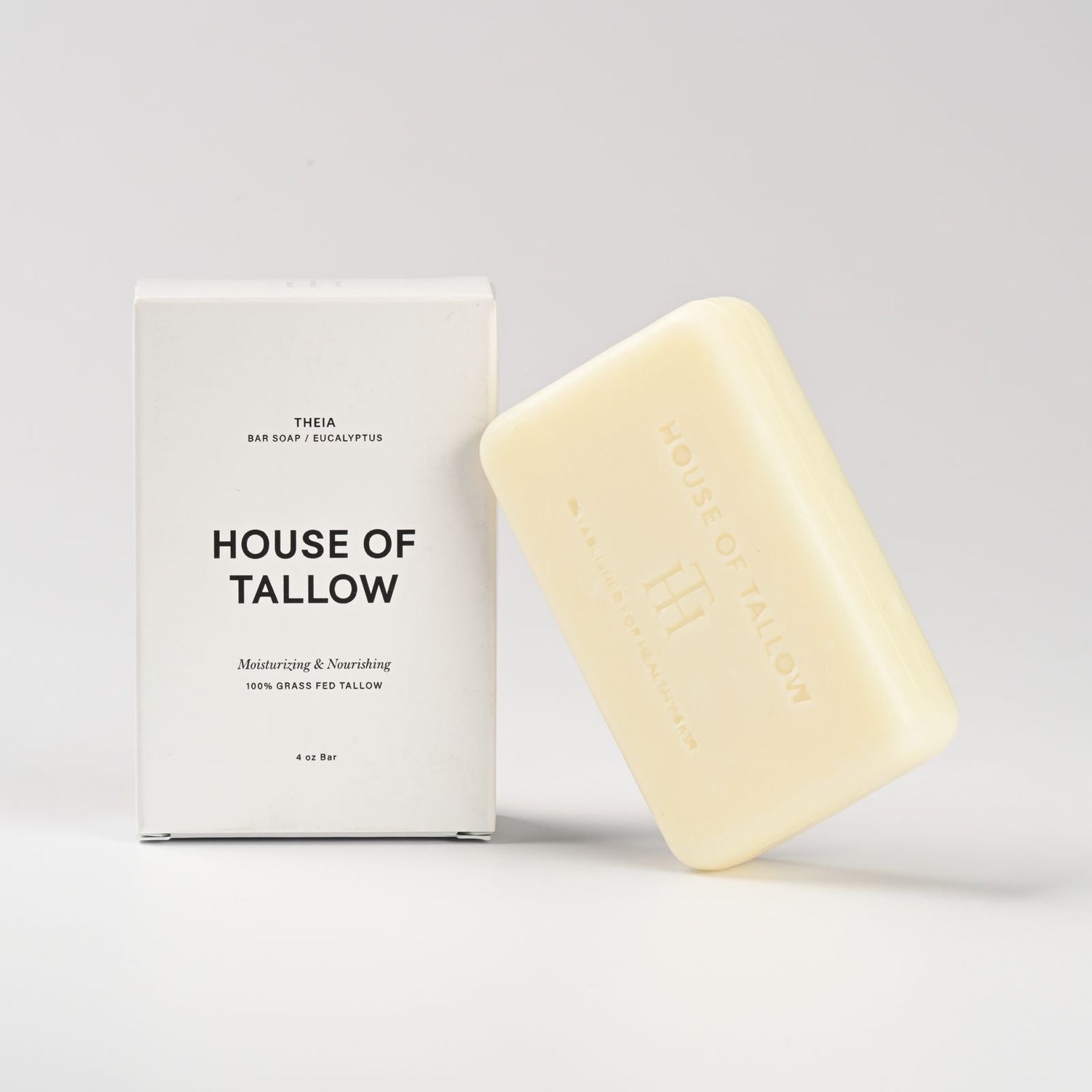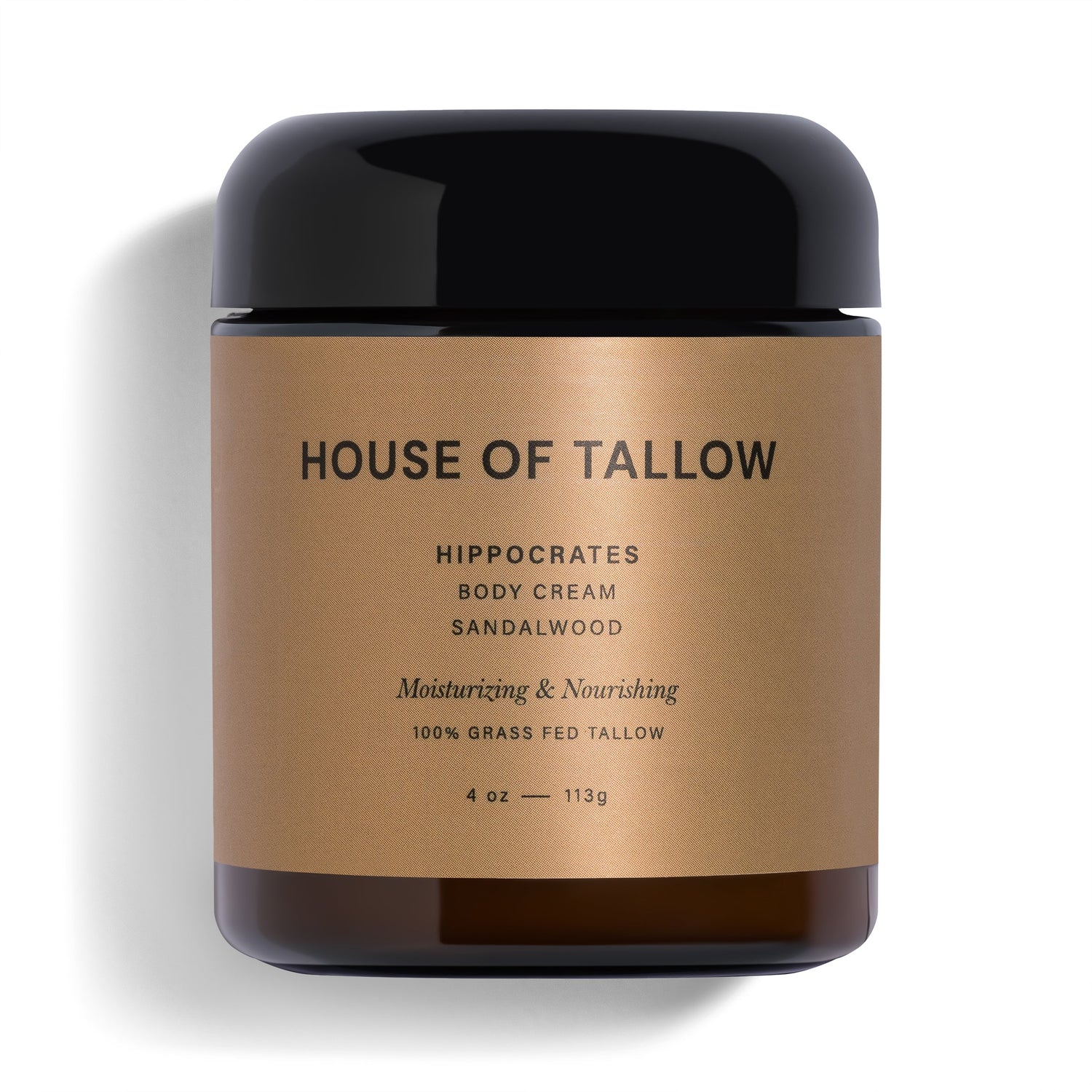Tallow skincare products are highly nutritious but prone to contamination. Without preservatives, bacteria and mold can grow within 2-3 weeks at room temperature. Preservatives ensure safety, extend shelf life, and maintain product quality. Here's what you need to know:
- Why Preservatives Are Essential: Tallow's rich vitamins and fatty acids attract microorganisms. Direct hand use and minimal processing increase contamination risk.
-
Types of Preservatives:
- Natural: Vitamin E, rosemary extract, and radish root ferment.
- Synthetic: Phenoxyethanol, benzyl alcohol, and ethylhexylglycerin.
- Natural vs. Synthetic: Natural options align with clean beauty trends but have shorter shelf lives. Synthetic preservatives are more effective and budget-friendly.
- Preservative-Free Challenges: Short shelf life (3-6 months), higher costs, and strict storage requirements.
Quick Comparison
| Feature | Natural Preservatives | Synthetic Preservatives |
|---|---|---|
| Shelf Life | 6-12 months | 2-3 years |
| Effectiveness | Moderate; higher doses needed | High; works at lower doses |
| Cost | Higher | Lower |
| Environmental Impact | Lower | Varies |
Preservatives are key to balancing product safety, shelf life, and consumer preferences, whether you choose natural or synthetic options.
Preserving Homemade Skincare Products: A Complete Guide to Formulation
Types of Preservatives Used in Tallow Skincare
Natural Preservatives
Vitamin E (tocopherol) helps prevent rancidity and offers antioxidant properties. It often works alongside ingredients like rosemary and grapefruit seed extracts, which provide antimicrobial protection. Another option is radish root ferment filtrate (Leucidal®), derived through fermentation. These natural choices, however, usually require higher amounts to be effective, which can increase costs and complicate formulations.
Synthetic Preservatives
Synthetic preservatives are known for their reliability in maintaining long-term product stability. Phenoxyethanol is a common choice due to its strong safety record and effectiveness. Other options like benzyl alcohol and ethylhexylglycerin are often combined to boost their preservative performance.
"While natural preservatives are gaining popularity, it's important to note that 'natural' doesn't always mean safer or more effective. The key is finding a balance between product safety, efficacy, and consumer preferences." - Dr. Jennifer Smith, Cosmetic Chemist, Journal of Cosmetic Dermatology
Natural vs. Synthetic Preservatives: A Comparison
Here’s a quick look at how natural and synthetic preservatives stack up:
| Characteristic | Natural Preservatives | Synthetic Preservatives |
|---|---|---|
| Shelf Life | 6-12 months | 2-3 years |
| Effectiveness | Moderate; requires higher doses | High; works at lower doses |
| Cost Impact | Higher overall costs | More budget-friendly |
| Consumer Acceptance | High; fits clean beauty trends | Mixed reactions |
| Formulation Flexibility | May alter product appearance | Minimal impact on aesthetics |
| Environmental Impact | Generally lower | Varies by chemical |
These differences influence how brands design their preservation systems. Hybrid systems, which combine natural and synthetic components, are becoming popular. For instance, research published in the International Journal of Cosmetic Science showed that blending 0.5% rosemary extract with synthetic preservatives reduced synthetic content by 50% while maintaining strong protection.
More tallow-based skincare brands are now incorporating multifunctional ingredients. Niacinamide is a great example - it not only offers antimicrobial benefits but also helps brighten the skin. This approach meets consumer demand for transparency and ensures effective preservation.
Preservative-Free Tallow Skincare: Feasibility
Challenges of Preservative-Free Products
Preservative-free tallow skincare comes with a few hurdles, such as a short shelf life of 3-6 months and production costs that are 20-40% higher due to the need for sterile conditions [1]. Heat and humidity can speed up spoilage, making it necessary to use specialized production setups and packaging to keep the product stable.
| Challenge | Impact | Solution |
|---|---|---|
| Short Shelf Life | Usable for 3-6 months | Produce in small batches |
| Environmental Sensitivity | Quick degradation | Use specialized packaging |
| Production Costs | Higher by 20-40% | Implement advanced methods |
These factors explain why many brands opt for a mix of preservation techniques, as explored in our discussion of natural vs synthetic options. Hybrid systems (see Section 2.3) can strike a balance, but some consumers still prefer entirely preservative-free products. Brands like House of Tallow address these issues by focusing on small-batch production and using sterile packaging.
Using Preservative-Free Products Safely
If you’re committed to preservative-free skincare, following strict guidelines is a must:
Critical usage tips:
- Store in a cool place below 65°F.
- Always use clean tools for application.
- Discard products after 6 months or if there are noticeable changes.
To extend the product's life, store it in a cool, dark spot - ideally between 35-65°F (2-18°C) [2]. During warmer months, refrigeration can help, but always check the manufacturer’s instructions first.
Key Safety Practices:
- Use clean, dry hands or a spatula to avoid contamination.
- Seal containers tightly after each use.
- Discard the product if you notice changes in texture, scent, or color.
- Pay attention to the "period after opening" symbol on the packaging.
- Opt for smaller quantities to ensure the product stays fresh.
sbb-itb-a1b9fc0
Choosing the Right Tallow Skincare Product
Understanding Ingredient Labels
When checking out tallow skincare products, pay close attention to the ingredient list. Look for "grass-fed" or "pasture-raised" tallow as the primary ingredient - this typically means the product is richer in nutrients. Preservatives, whether natural or synthetic, are usually listed toward the end of the label and are often present in small amounts (around 0.5-1%).
Here’s an example of a good label: Grass-fed tallow (80%), organic olive oil, vitamin E, lavender oil.
| Label Component | What to Look For | Why It Matters |
|---|---|---|
| Tallow Source | "Grass-fed" or "Pasture-raised" | Indicates higher nutrient levels |
| Preservative Type | Natural (e.g., vitamin E, rosemary extract) or synthetic (e.g., phenoxyethanol) | Affects shelf life and product stability |
| Percentage | Tallow at 60-80% | Ensures the product is effective |
| Additional Ingredients | Minimal additives | Reduces the risk of irritation |
Selecting Products for Different Skin Types
The type of preservatives used in tallow skincare products can affect their shelf life and how they interact with your skin. Tallow works well with the skin’s natural lipid barrier, delivering nutrients that support healthier skin. Choose a product with a preservative system that matches your skin's specific needs - gentle options for sensitive skin, or antioxidant-rich ingredients for aging skin.
Here’s a quick guide based on skin type:
- Dry skin: Look for high tallow content paired with vitamin E.
- Sensitive skin: Opt for fragrance-free products with minimal preservatives.
- Oily skin: Choose lighter formulations that won’t feel heavy.
- Mature skin: Antioxidant-rich options help protect and nourish aging skin.
House of Tallow: A Trusted Source for Natural Tallow Skincare

House of Tallow’s Gaia Body Cream is a standout choice, made with grass-fed tallow and preserved naturally with vitamin E. Their products prioritize high-quality tallow and carefully selected natural ingredients. Plus, the brand is transparent about their formulations, making it easy to know exactly what you're putting on your skin.
Conclusion: Understanding Preservatives in Tallow Skincare
Key Takeaways
Preservatives in tallow-based skincare need to be chosen with care, focusing on their ability to maintain safety, stability, and effectiveness. While water-based products must include preservatives (whether natural or synthetic), even oil-only tallow formulations benefit from antioxidants like vitamin E to prevent oxidation.
Our comparison of natural and synthetic preservatives highlights the importance of weighing several factors, such as:
- Protection against microbial growth
- Maintaining product stability and extending shelf life
- Safety and compatibility with skin
- Affordability within the product's formula
This helps consumers better understand product labels. Natural preservatives, for instance, may offer extra skincare perks but often come with compromises in shelf life and cost. A blend of natural and synthetic options can strike a practical balance between effective preservation and consumer preferences.
Brands like House of Tallow showcase how clear and thoughtful preservation practices can ensure safety and effectiveness while staying true to natural formulations. Their focus on high-quality ingredients and well-planned preservation methods illustrates how to balance natural integrity with product stability.
FAQs
How to store tallow face cream?
To keep your tallow face cream in good condition, store it in a cool, dry place with the container tightly sealed. Look out for signs of spoilage such as discoloration, changes in texture, rancid smells, or mold. For detailed guidance on spotting spoiled products, refer to Section 3.2.
Here are some general storage tips for tallow-based skincare products:
| Practice | Why It Matters |
|---|---|
| Use a clean spatula | Helps avoid contamination, especially for preservative-free products |
| Keep away from humidity | Slows down product degradation |
| Opt for dark containers | Shields the product from UV light damage |
Brands like House of Tallow often include specific storage instructions on their labels, so be sure to check for any additional recommendations.




